Verdun 76/866885 - 01/866885



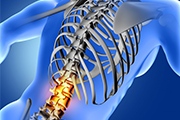
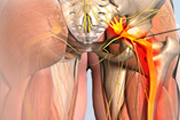


Ankylosing spondylitis (AS) is a type of arthritis in which there is long term inflammation of the joints of the spine. Typically the joints where the spine joins the pelvis are also affected.Occasionally other joints such as the shoulders or hips are involved. Eye and bowel problems may also occur. Back pain is a characteristic symptom of AS, and it often comes and goes. Stiffness of the affected joints generally worsens over time.Early signs and symptoms of ankylosing spondylitis might include pain and stiffness in your lower back and hips, especially in the morning and after periods of inactivity. Neck pain and fatigue also are common. Over time, symptoms might worsen, improve or stop at irregular intervals.

Neck pain can be caused by many things—but is most often related to getting older. Like the rest of the body, the disks and joints in the neck (cervical spine) slowly degenerate as we age. Cervical spondylosis, commonly called arthritis of the neck, is the medical term for these age-related, wear-and-tear changes that occur over time.
Cervical spondylosis is extremely common. More than 85 percent of people over the age of 60 are affected. The condition most often causes pain and stiffness in the neck—although many people with cervical spondylosis experience no noticeable symptoms.

Like the rest of the body, the disks and joints in the neck (cervical spine) slowly degenerate as we age. Cervical spondylosis, commonly called arthritis of the neck, is the medical term for these age-related, wear-and-tear changes that occur over time. Cervical spondylosis is extremely common. You may feel pain in the middle or on either side of you neck, but it may also extend to the shoulder and shoulder blade, or to the upper chest. If you have tension headaches, the pain often travels to the back of your head, and sometimes behind your eye or even into your ear.It may be painful to move and your muscles may feel tight, especially if you’ve been sitting in one position for a long time. You may notice your neck doesn’t turn as far as it normally does, for example when you try to look over your shoulder while reversing the car.
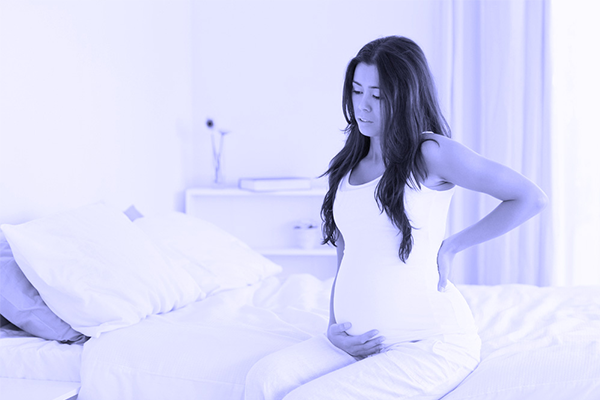
Pregnancy back pain typically happens where the pelvis meets your spine, at the sacroiliac joint.There are many possible reasons why it happens. Here are some of the more likely causes: weight gain, posture changes, hormone changes, muscle separation, and stress.

Chronic back pain is defined as pain that persists for 12 weeks or longer, even after an initial injury or underlying cause of acute low back pain has been treated. About 20 percent of people affected by acute low back pain develop chronic low back pain with persistent symptoms at one year. The main symptom of back pain is, an ache or pain anywhere on the back, and sometimes all the way down to the buttocks and legs. Some back issues can cause pain in other parts of the body, depending on the nerves affected.

Degenerative disc disease is not really a disease but a term used to describe the normal changes in your spinal discs as you age. Spinal discs are soft, compressible discs that separate the interlocking bones (vertebrae) that make up the spine. degenerative disc disease describes the symptoms of pain and possibly radiating weakness or numbness stemming from a degenerated disc in the spine.

Degenerative spondylolisthesis is Latin for “slipped vertebral body,” and it is diagnosed when one vertebra slips forward over the one below it. This condition occurs as a consequence of the general aging process in which the bones, joints, and ligaments in the spine become weak and less able to hold the spinal column in alignment.Degenerative spondylolisthesis is more common in people over age 50, and far more common in individuals older than 65.Degenerative spondylolisthesis is relatively rare at other levels of the spine, but may occur at two levels or even three levels simultaneously. While not as common as lumbar spondylolisthesis, cervical spondylolisthesis (in the neck) can occur. When degenerative spondylolisthesis does occur in the neck, it is usually a secondary issue to arthritis in the facet joints.

Facet joint syndrome is pain at the joint between two vertebrae in your spine. Another term for facet joint syndrome is osteoarthritis. The facet joints are the joints in your spine that make your back flexible and enable you to bend and twist. Facet joint syndrome can be caused by a combination of aging, pressure overload of your facet joints, and injury.Pressure overload on your facet joints is probably caused by degeneration of the intervertebral discs in your spine. As the discs degenerate, they wear down and begin to collapse. This narrows the space between each vertebra. This narrowing of the space between each vertebra affects the way your facet joints line up. When this occurs, it places too much pressure on the articular cartilage surface of the facet joint. The excessive pressure leads to damage of the articular surface and eventually the cartilage begins to wear away.
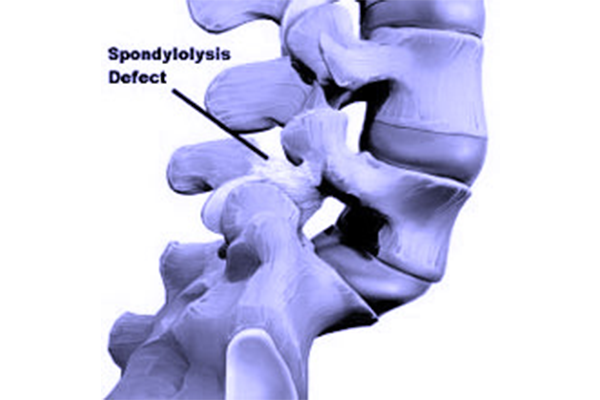
Failed back syndrome or post-laminectomy syndrome is a condition characterized by chronic pain following back surgeries. Many factors can contribute to the onset or development of FBS, including residual or recurrent spinal disc herniation, persistent post-operative pressure on a spinal nerve, altered joint mobility, joint hypermobility with instability, scar tissue (fibrosis), depression, anxiety, sleeplessness, spinal muscular deconditioning and even Propionibacterium acnes infection. An individual may be predisposed to the development of FBS due to systemic disorders such as diabetes, autoimmune disease and peripheral blood vessels (vascular) disease.

Fibromyalgia (FM) is a medical condition characterized by chronic widespread pain and a heightened pain response to pressure. Other symptoms include tiredness to a degree that normal activities are affected, sleep problems, and troubles with memory. Some people also report restless legs syndrome, bowel or bladder problems, numbness and tingling, and sensitivity to noise, lights or temperature. Fibromyalgia is frequently associated with depression, anxiety, and posttraumatic stress disorder.Other types of chronic pain are also frequently present. The cause of fibromyalgia is unknown; however, it is believed to involve a combination of genetic and environmental factors with half the risk attributed to each.

The spine curves slightly backwards where it joins the pelvis. This curve is called lordosis. At chest level where the ribs join the spine, it curves slightly forward. This curve is called kyphosis. Flatback syndrome occurs when there is a loss either of lordosis or kyphosis or both, making the spine straight. In addition to the appearance of their backs, persons with flatback syndrome may also have:A sensation of falling forward, chronic pain in the back muscles, difficulty with certain daily activities, fatigue, stooping at the end of the day.

Sometimes called a slipped disk or a ruptured disk, a herniated disk occurs when some of the softer “jelly” pushes out through a tear in the tougher exterior. A herniated disk can irritate nearby nerves and result in pain, numbness or weakness in an arm or leg. Most herniated disks occur in your lower back (lumbar spine), although they can also occur in your neck (cervical spine). The most common signs and symptoms of a herniated disk are: arm or leg pain, numbness or tingling, weakness.

Kyphoscoliosis is a deformity of the spine characterized by abnormal curvature of the vertebral column in two planes (coronal and sagittal). It is a combination of kyphosis and scoliosis. It is seen in many disorders such as Syringomyelia and can cause many conditions such as pulmonary hypertension. The following are clear signs of Kyphoscoliosis: abnormal hunch along with a presence of S or C-like shape, uneven lengths of arms and legs, presence of associated disorders likes hypertension, neurological disorders, abnormal gait.

Your neck is made up of vertebrae that extend from the skull to the upper torso. Cervical discs absorb shock between the bones. The bones, ligaments, and muscles of your neck support your head and allow for motion. Any abnormalities, inflammation, or injury can cause neck pain or stiffness.Many people experience neck pain or stiffness occasionally. In many cases, it’s due to poor posture or overuse. Sometimes, neck pain is caused by injury from a fall, contact sports, or whiplash.

Osteoarthritis (OA) is a type of joint disease that results from breakdown of joint cartilage and underlying bone. The most common symptoms are joint pain and stiffness. Initially, symptoms may occur only following exercise, but over time may become constant. Other symptoms may include joint swelling, decreased range of motion, and when the back is affected weakness or numbness of the arms and legs. The most commonly involved joints are those near the ends of the fingers, at the base of the thumb, neck, lower back, knee, and hips. Joints on one side of the body are often more affected than those on the other. Usually the symptoms come on over years. It can affect work and normal daily activities. Unlike other types of arthritis, only the joints are typically affected.

Facet Joint Osteoarthritis. Osteoarthritis (degenerative arthritis) can cause breakdown of cartilage between the facet joints. When the joints move, the lack of the cartilage causes pain as well as loss of motion and stiffness. The facet joints are located in the back portion (posterior) of the spine. The joints combine with the disc space to create a three-joint complex at each vertebral level. The facet joint consists of two opposing bony surfaces with cartilage between them and a capsule around it that produces fluid.

Osteoporosis is a condition of fragile bone with an increased susceptibility to fracture. Osteoporosis weakens bone and increases risk of bones breaking. Bone mass (bone density) decreases after 35 years of age, and bone loss occurs more rapidly in women after menopause.Osteoporosis can be present without any symptoms for decades because osteoporosis doesn’t cause symptoms until bone breaks (fractures). Moreover, some osteoporotic fractures may escape detection for years when they do not cause symptoms. Therefore, patients may not be aware of their osteoporosis until they suffer a painful fracture.

Piriformis syndrome is a somewhat controversial diagnosis of a neuromuscular disorder which is related to the sciatic nerve. According to the terms of the syndrome, the sciatic nerve becomes compressed or otherwise irritated by the piriformis muscle causing pain, tingling and numbness in the hip/ buttocks and along the path of the sciatic nerve descending the lower thigh and into the leg. It is one of the few conditions which causes posterior hip pain. The condition has no external signs.
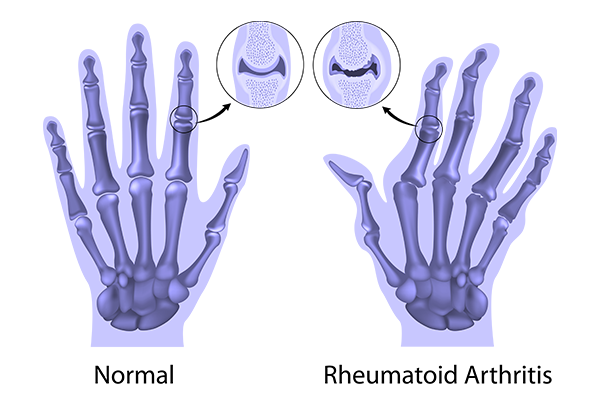
Rheumatoid arthritis (RA) is a long-term autoimmune disorder that primarily affects joints. It typically results in warm, swollen, and painful joints. Pain and stiffness often worsen following rest. Most commonly, the wrist and hands are involved, with the same joints typically involved on both sides of the body. The disease may also affect other parts of the body. This may result in a low red blood cell count, inflammation around the lungs, and inflammation around the heart. Fever and low energy may also be present. Often, symptoms come on gradually over weeks to months.

Sacroiliac joint dysfunction generally refers to pain in the sacroiliac joint region that is caused by abnormal motion in the sacroiliac joint, either too much motion or too little motion. It typically results in inflammation of the sacroiliac joint, and can be debilitating.Common symptoms include lower back pain, buttocks pain, sciatic leg pain, groin pain, hip pain (for explanation of leg, groin, and hip pain, see referred pain), urinary frequency, and “transient numbness, prickling, or tingling.” Pain can range from dull aching to sharp and stabbing and increases with physical activity. Symptoms also worsen with prolonged or sustained positions (i.e., sitting, standing, lying).

Sciatica is a medical condition characterized by pain going down the leg from the lower back.This pain may go down the back, outside, or front of the leg. Onset is often sudden following activities like heavy lifting, though gradual onset may also occur. Typically, symptoms are only on one side of the body.Certain causes, however, may result in pain on both sides. Lower back pain is sometimes but not always present. Weakness or numbness may occur in various parts of the affected leg and foot.
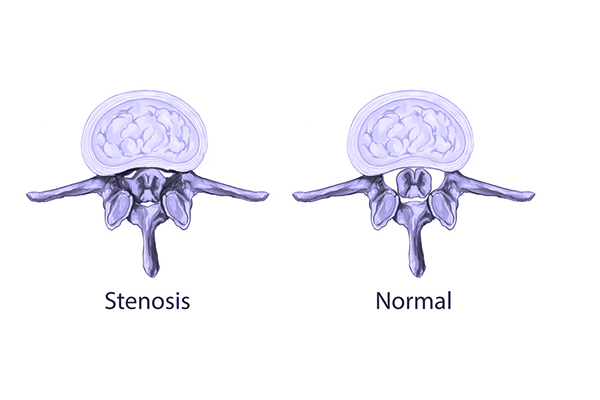
Spinal stenosis is an abnormal narrowing (stenosis) of the spinal canal that may occur in any of the regions of the spine. This narrowing causes a restriction to the spinal canal, resulting in a neurological deficit. Symptoms include pain, numbness, paraesthesia, and loss of motor control. The location of the stenosis determines which area of the body is affected. With spinal stenosis, the spinal canal is narrowed at the vertebral canal, which is a foramen between the vertebrae where the spinal cord (in the cervical or thoracic spine) or nerve roots (in the lumbar spine) pass through.

Spinal tumors are neoplasms located in the spinal cord. Extradural tumors are more common than intradural neoplasms.Depending on their location, the spinal cord tumors can be:Extradural – outside the dura mater lining (most common), intradural – part of the dura, intramedullary – inside the spinal cord, extramedullary- inside the dura, but outside the spinal cord.

